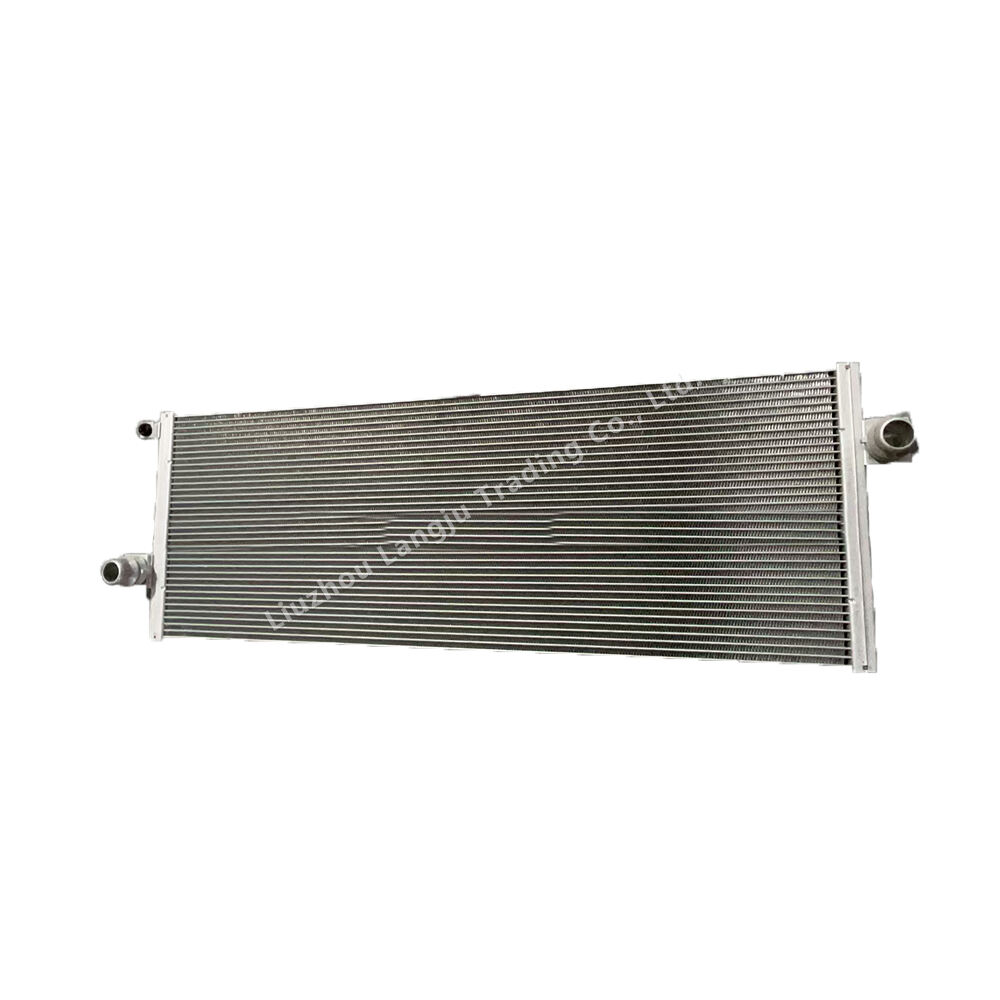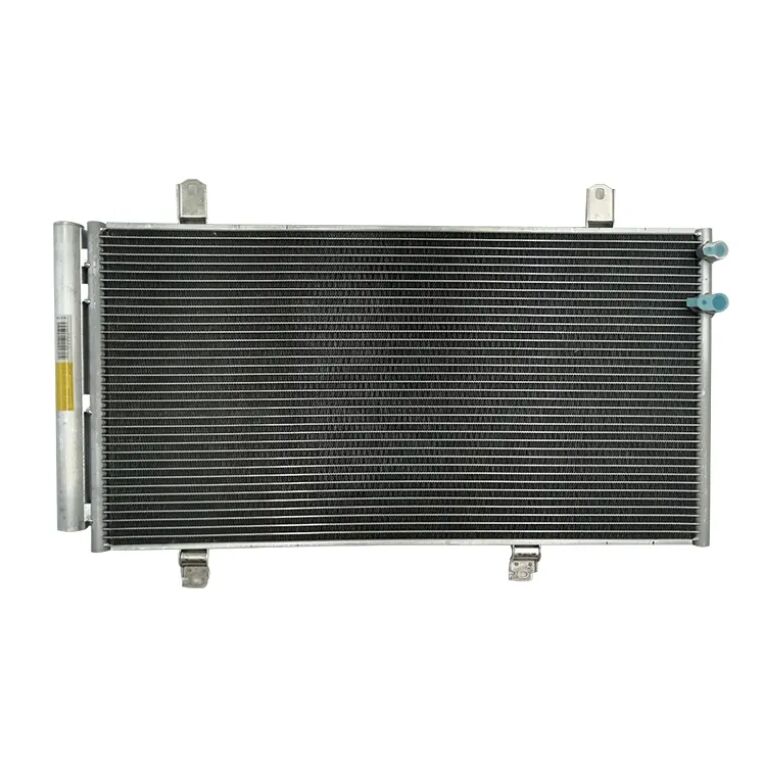Copper Radiators: Maximum Conductivity With Maintenance Demands
Unmatched Heat Transfer Capabilities
Copper radiators stand out because they transfer heat so well thanks to how conductive they are thermally speaking. They just soak up and spread warmth better compared to what we see with aluminum models on the market today. Studies indicate copper can actually release heat around 30 percent quicker than aluminum versions, something that matters a lot when building cars that need maximum cooling power under stress conditions. Good heat movement prevents engines from getting too hot, keeping everything running smoothly and extending how long these machines last before needing repairs. Mechanics and car builders often go for copper options whenever thermal performance really counts, especially in racing or heavy duty applications where temperature control makes all the difference between success and failure.
Corrosion Vulnerability in Modern Vehicles
Copper radiators work great for transferring heat but they tend to corrode over time, especially when exposed to moisture or salt air near coastal areas. The problem gets worse because most car cooling systems mix different types of metals together, which creates what mechanics call galvanic corrosion. This slow chemical reaction eats away at the copper components until eventually something fails. Regular checkups matter a lot here though. Mechanics recommend applying special anti-corrosion sprays during routine service and looking closely at the radiator core for early signs of damage. Many drivers find that spending extra on quality maintenance saves money long term since copper radiators last much longer when properly protected. While copper offers excellent thermal properties, its tendency to break down makes it something of a balancing act between getting good performance now versus dealing with replacement costs later.
Heavyweight Impact on Fuel Efficiency
Copper radiators weigh quite a bit more than their aluminum counterparts, which can be a real problem for fuel efficiency especially in compact cars where every ounce matters. Research indicates that extra weight in a vehicle typically cuts down on gas mileage somewhere around 1% to maybe 2%. So there's this constant tug of war between getting better heat dissipation from copper and dealing with worse fuel consumption because of the weight. When car manufacturers decide whether to go with copper or stick with aluminum, they're basically walking a tightrope between how well the radiator moves heat and what happens to fuel economy when the car gets heavier. Most automotive engineers spend plenty of time crunching numbers on this exact dilemma as part of their design process for new models.
Aluminum Radiators: Balanced Performance for Modern Vehicles
Lightweight Advantage and Corrosion Resistance
Aluminum radiators get a lot of praise because they're so much lighter than copper ones. We're talking about roughly half the weight, which makes a real difference when it comes to getting better gas mileage. The reduced weight does more than just save fuel though. Cars handle better too, and overall performance gets a noticeable boost. Another big plus is how well these radiators resist rust and corrosion. They can take whatever Mother Nature throws at them from coastal salt air to mountain road deicers. This means fewer trips to the mechanic for repairs or replacements. The whole auto industry has been moving toward building lighter vehicles lately, and aluminum radiators fit right into this strategy. Lighter cars mean better handling around corners and those all important fuel savings at the pump.
Cost-Effective Manufacturing Process
Making aluminum radiators instead of copper ones saves money all around, which means factories spend less and customers pay less too. Aluminum just happens to be everywhere these days, so it doesn't cost as much as rare metals like copper do. That's one reason why car makers love working with aluminum so much. Recent improvements in how we work with aluminum metal have made it easier to shape and put together, cutting costs even more and explaining why so many cars now come with aluminum parts. With cheaper materials and quicker production times, both the companies building vehicles and people buying them get to pocket some real cash savings.
Thermal Efficiency Comparison With Copper
Aluminum doesn't conduct heat as well as copper does, but new radiator designs have closed the gap quite a bit. Manufacturers have been playing around with better fin shapes and tube arrangements that actually improve how air moves through the system and transfers heat away from the engine. Real world testing shows these aluminum units can shed heat just as effectively as their copper counterparts in most situations. For everyday driving conditions, aluminum makes sense because it's lighter too. But when we're talking about race cars or heavy duty trucks that generate massive amounts of heat, many mechanics still reach for copper radiators since they handle extreme temperatures so much better. The choice really comes down to what kind of stress the cooling system will face day to day.
Plastic-Composite Radiators: Lightweight Innovation
Weight Reduction Benefits
Plastic composite radiators save a lot of weight, something car makers really care about when trying to improve fuel economy. When the cooling system gets lighter, the engine doesn't need to work as hard, so cars end up getting better mileage on the road. Plus, switching to these plastic parts helps cut down on carbon emissions from vehicles, which fits right into what most automakers are aiming for these days with their green initiatives. Many companies have started making this shift not just because regulations demand it, but also because consumers increasingly want eco friendly options in their garages.
Heat Tolerance Limitations Over Time
Plastic composite materials often struggle with heat tolerance when compared to old fashioned metal radiators, and this affects how long they last before needing repair or replacement. When these materials get exposed to really high temps for extended periods, they start breaking down from the inside out. That means mechanics have to check them more frequently and sometimes replace parts entirely after just a few years of service. Researchers aren't sitting idle though. Labs across the country are working on new composite formulas that can stand up better to intense heat without losing structural integrity. Some prototypes already show promise in withstanding temperatures that would melt standard plastic composites within hours.
Hybrid Designs With Metal Components
Manufacturers have started mixing metal parts into plastic composite radiators because pure plastic versions just don't cut it in certain situations. The new hybrid approach takes advantage of what plastics do well (being light) while also getting the heat transfer benefits from metals. This combination creates radiators that work better overall without sacrificing too much weight. Car makers especially love this since they need cooling systems that won't add unnecessary bulk but still perform reliably under stress. With fuel economy standards getting tighter and electric vehicles becoming more common, these kinds of radiator improvements are showing up across the industry as companies try to stay competitive without compromising on quality or safety.
Material Performance Comparison
Heat Dissipation Rates Across Materials
Looking at how different materials handle heat loss, copper really comes out on top compared to aluminum and plastic options. The way copper conducts heat is just amazing, which is why it works so well in those high power situations where getting rid of heat fast matters a lot. Aluminum isn't quite as good as copper, but it still does pretty decent work, particularly when manufacturers design systems specifically for average cars rather than supercars. Matching up what a material can do with actual car specs is absolutely important though. Getting this right means the selected material will actually perform properly under real road conditions without overheating or failing prematurely in radiators and cooling systems.
Stress Resistance in Extreme Temperatures
How well different radiator materials hold up against heat stress really depends on what they're made of. Copper and aluminum stand out as top performers here, lasting much longer than plastic alternatives. Real world testing shows aluminum stays put even when things get hot, making it pretty tough stuff for radiators working hard in tough conditions. Plastic composites aren't so lucky though. These materials often break down after repeated exposure to high temps, sometimes leading to complete system failures during summer driving. For anyone picking radiator components, knowing exactly what temperature range each material can handle makes all the difference. Getting this right means vehicles will keep running smoothly no matter how brutal the outside weather gets.

Lifespan Expectancy by Material Type
Radiators don't all last the same amount of time, and it really depends on what they're made from. Copper ones tend to stick around longest if kept in good shape, sometimes hitting 10 to 15 years before needing replacement. That makes copper a solid pick when someone wants something that will outlast other options in their car. Aluminum radiators fall somewhere in between, lasting about 7 to 10 years typically. They offer decent performance at a lower price point than copper though. Then there are those plastic composite models that just don't hold up as well against the heat over time. Most folks find themselves replacing these every 5 to 7 years because they break down faster under normal operating conditions. Knowing how long different materials last helps mechanics plan ahead for repairs and keeps vehicles running smoothly without unexpected breakdowns down the road.
Climate and Usage Considerations
Tropical vs Arctic Climate Requirements
Climate has a big impact on how well radiators work over time. In hot, humid areas like the tropics, radiators tend to corrode much faster because of all that moisture in the air. This naturally shortens their lifespan and makes them less effective at doing their job. Things get tricky too in really cold places where freezing temperatures are common. Radiators there need special materials and construction methods that can handle the brutal winter conditions without cracking or failing. For anyone looking to keep vehicles running reliably across different regions, matching radiator specs to local weather patterns just makes sense. That means going for rust proof options in warm climates while making sure Arctic grade models actually work with standard antifreeze solutions. Getting this right extends radiator life considerably no matter where they end up being used.
Heavy-Duty vs Passenger Vehicle Needs
The radiator requirements are quite different for heavy duty versus regular passenger cars. Big rigs, trucks and school buses produce way more heat and put serious strain on their cooling systems. That's why they need tough stuff like copper or special aluminum blends that can take the punishment without breaking down over time. For everyday cars though, things work differently. Most manufacturers go with lighter options like standard aluminum or even some plastic composite materials. These still do the job of keeping engines cool but help save gas since they cut down on overall vehicle weight. Getting this straight matters when picking out radiators. The wrong choice means trouble down the road whether it's overheating problems or just shorter lifespan for the component. Mechanics know this well from experience working on everything from delivery vans to family sedans.
High-Performance Engine Cooling Demands
Engines built for peak performance need radiators capable of moving heat effectively while standing up to intense pressure. Copper radiators tend to be the go to choice here because they conduct heat better than most materials and hold up well over time. These types of radiators work particularly well in race cars and other machines pushed to their limits, since keeping the engine cool means the difference between winning and breaking down on the track. When picking out a radiator for such demanding applications, it's important to make sure the cooling system won't give way when temperatures spike. A good quality radiator helps protect what's arguably the most expensive part of any high performance machine while also making sure the vehicle runs at its best capacity. For anyone serious about getting maximum power out of their engine, spending extra on quality materials makes perfect sense in the long run.
FAQs About Radiators
Why are copper radiators preferred for high-performance vehicles?
Copper radiators offer superior thermal conductivity, allowing for better heat dissipation, which is vital for high-performance vehicles to prevent engine overheating.
What are the main drawbacks of using copper radiators?
The main drawbacks include their susceptibility to corrosion and heavier weight, which can reduce fuel efficiency, especially in smaller vehicles.
How do aluminum radiators compare in terms of heat dissipation?
Although less effective than copper, modern aluminum radiators can achieve competitive thermal efficiency through advanced designs.
Are plastic-composite radiators reliable?
Plastic-composite radiators offer weight benefits but may not tolerate heat as well as metal radiators, requiring regular inspections for degradation.
Which material is best for radiators in tropical climates?
Aluminum is preferable in tropical climates due to its excellent corrosion resistance compared to copper.

